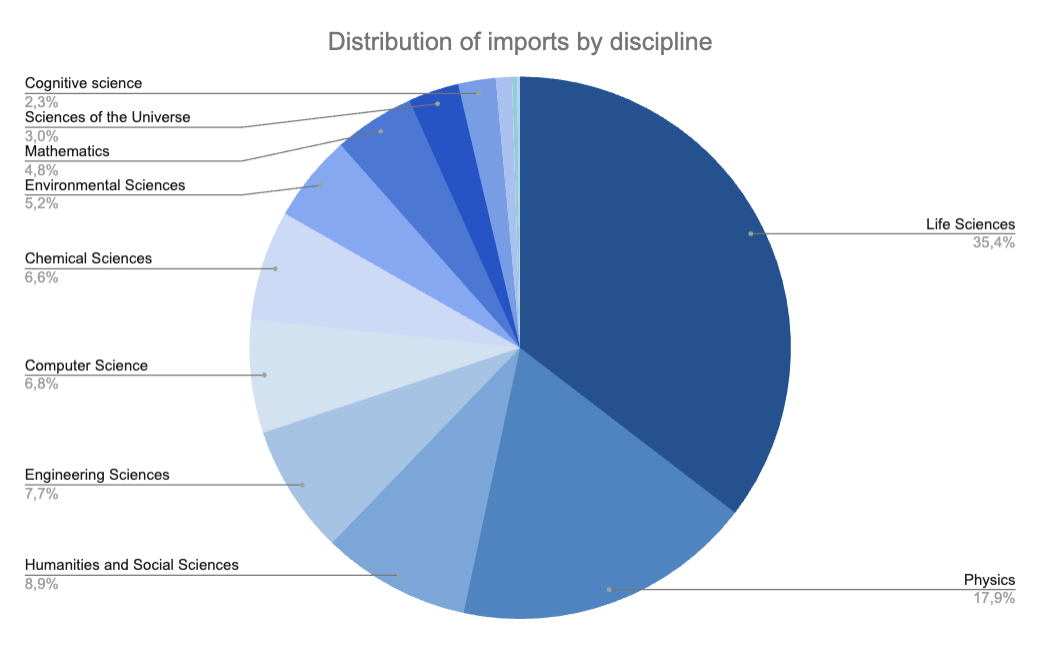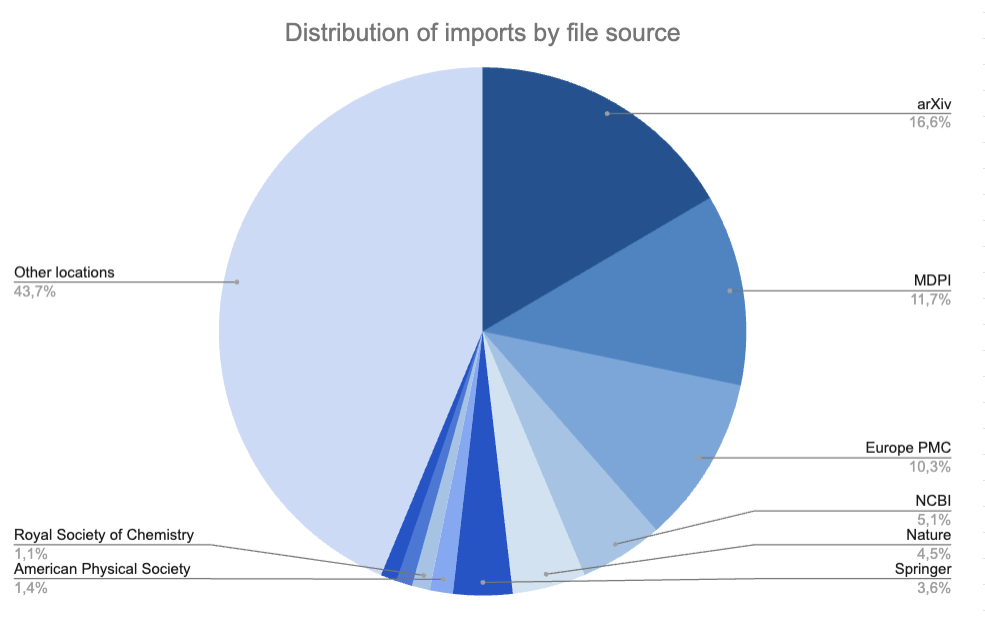In six months, the deposit suggestion service has automatically enriched the HAL with the full text of more than 8,000 publications, identified by a DOI and already in open access. Life sciences and physics are the two most active disciplines so far.
The deposit suggestion service is now 6 months old! The principle of this service, dedicated to researchers, is to suggest files to be imported into HAL. Based on the DOI, the aim is to identify their publications that are already freely available on other platforms and to suggest them in an interface: if the users accept the suggestion, the file is automatically imported without any further intervention on their part. This feature applies both to adding the file to an existing bibliographic record in HAL (no change to metadata) and to creating the deposit if the publication is not already referenced.
What is the impact of this new service?
More than 20,000 users have consulted the “Deposit suggestions” page in their space at least once, and almost as many have configured the service to notify them of new suggestions. The suggestion database includes all publications published since 2014 and is updated once a month. It currently contains over 97,000 publication references.
In six months of use, 8,070 full-text files have been imported into HAL by 3,166 different users. These imports are almost all articles published in journals.
The average number of imports per user is 2.5. And the record for the number of publications imported by a single user is… 87!
Distribution by discipline and origin of the full-text file
Looking at the disciplines of the imported deposits, publications in the life sciences are most represented (35.4% of imports), followed by physics (17.9%).

By cross-referencing this information with the distribution of the source platforms where the open access files are located and are retrieved, we have some explanatory elements for this distribution. The reference open archive for physics, arXiv, is the source of 16.6% of these imports; for more than 15% of these imports, the source of the files is PubMed Central (NCBI) and Europe PMC, which are the reference archives for the life sciences.

11.7% of imports are articles published in a journal published by MDPI. According to the APC survey carried out by the Couperin Consortium, this is the publisher that will receive the most APCs (author processing charges) from French institutions between 2015 and 2022.
The files for almost 3,000 imports come from sources as diverse as Zenodo, bioRxiv, IEEE, IOP Science and Digital CSIC, to name but a few.
Observations and challenges
Notably absent are publications imported from a journal published by Elsevier, which also features prominently in Couperin’s results. This is one of the CCSD’s findings for the suggestion service: some publishers have technical barriers in place that prevent machines from retrieving full-text files of publications that are otherwise freely available.
Some of you who have accepted suggestions may have been surprised to receive a request for modification from the moderation teams. Every imported file is indeed checked before it goes online. In some cases, the proposed files are copyrighted by the publisher, and are likely to be hosted on platforms or open archives that do not perform any checks before putting them online. This explains the type of requests you may receive.
The most striking observation is the dependence of the service on the presence of Creative Commons licences in the metadata. The service relies on these licences to fulfil an essential condition: a publication will only be suggested in the deposit suggestions interface if it can be freely distributed on HAL. If the publisher does not provide the licence in the metadata associated with the DOI, HAL cannot make the suggestion.
One of the goals of future software development is to check for the presence of the distribution licence in the pdf file itself, which will partially eliminate this dependency. Beyond the technical issues, the CCSD aims to promote this service to researchers in order to maximise its potential.
The deposit suggestion service, an important part of the Equipex+ HALiance project, represents a new way of feeding HAL and offers an ultra-simple method of depositing your publications. Why not check if HAL has any suggestions for you?